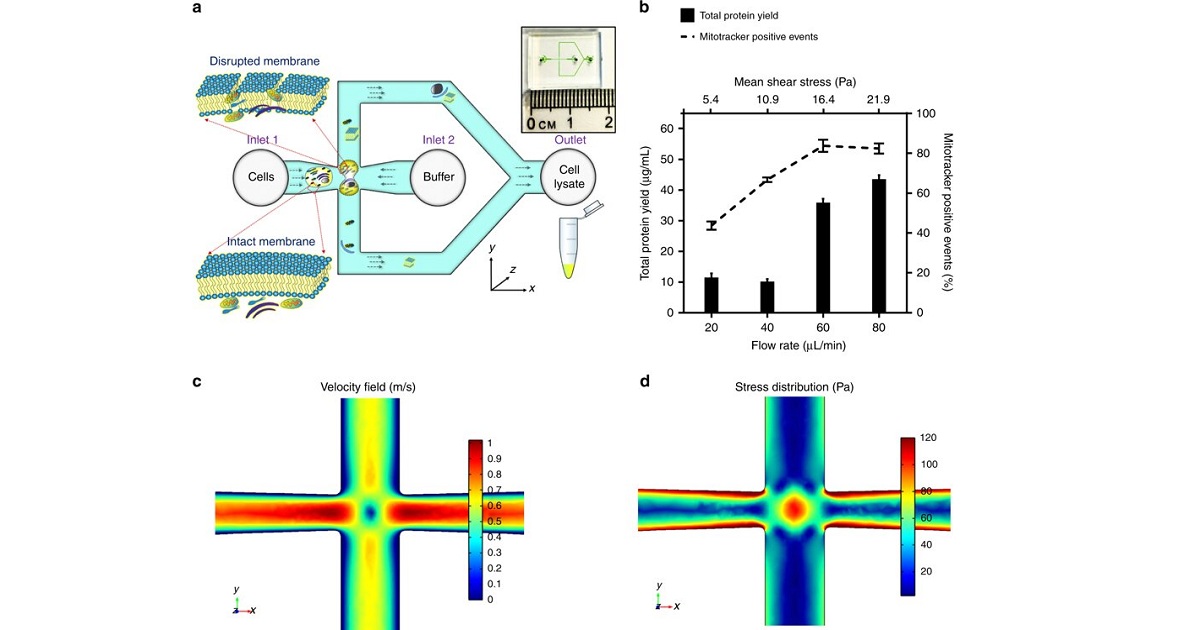Extracting functional mitochondria using microfluidics devices
Phys.org | January 16, 2019

Mitochondria are dynamic, bioenergetic intracellular organelles, responsible for energy production via ATP production during respiration. They are involved in key cellular metabolic tasks that regulate vital physiological responses of cells, including cell signaling, cell differentiation, and cell death. Defective mitochondria are linked to several critical human genetic diseases, including neurodegenerative disorders, cancer, and cardiovascular disease.
The detailed characterization of functional mitochondria remains relatively unexplored due to a lack of effective organelle extraction methods. For instance, the extraction process must sustain sufficient functionality of the organelle ex vivo to illuminate their cytosolic functions in the presence of cytoskeleton and other subcellular organelles. Since mitochondria grow in a complex reticular network within cells to undergo structural alternations, their intracellular characterization is further complicated. As a result, in vitro analysis of mitochondria remains the mainstream method, to separately extract and understand the intrinsic properties of mitochondria, without the interference of other subcellular organelles.
In a recent study, now published in Microsystems & Nanoengineering, Habibur Rahman and colleagues at the Department of Biomedical Engineering explored the possibility of controlling hydrodynamic stress for efficient mitochondrial extraction. For this, they used cross-junction microfluidic geometry at the microscale to selectively disrupt the cellular membrane while securing the mitochondrial membrane's integrity.